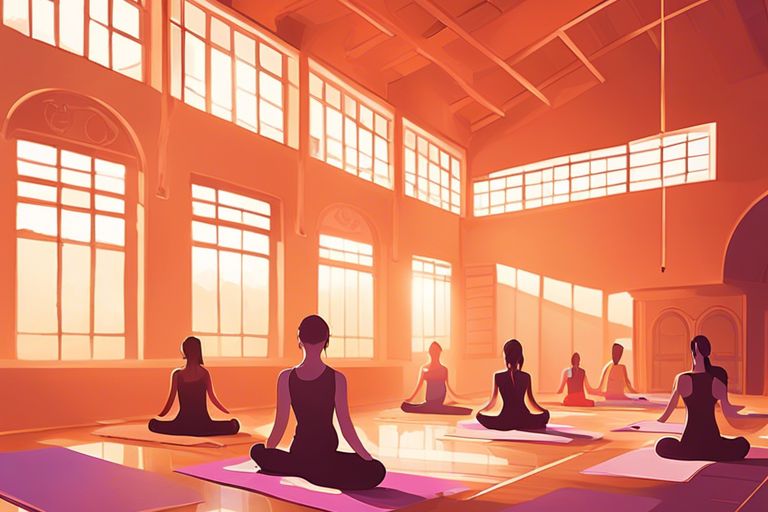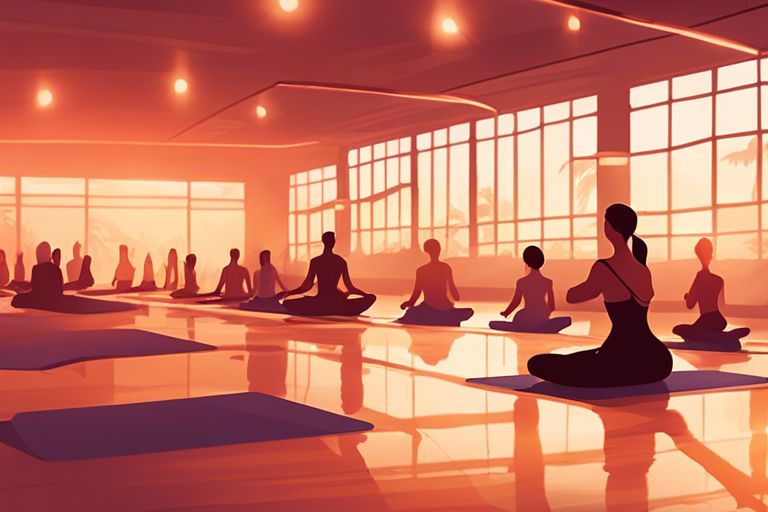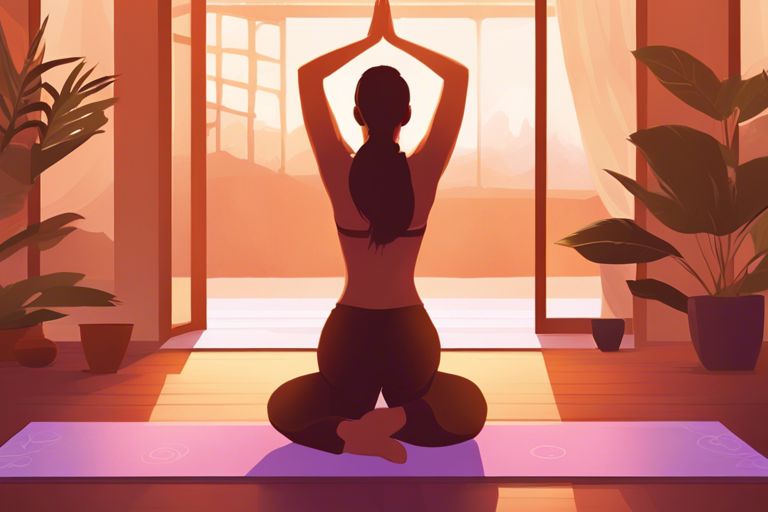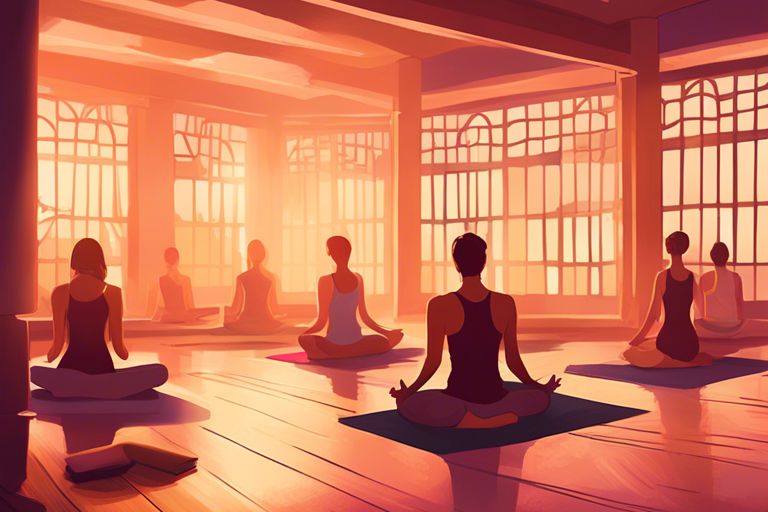Fitness enthusiasts, are you ready to immerse yourself in the transformative power of hot yoga? Embrace the healing benefits of this ancient practice as you sweat out toxins, increase flexibility, and find inner peace. Through the combination of intense heat and dynamic poses, hot yoga not only detoxifies your body but also calms your mind. Experience the miraculous healing that comes from uniting body, mind, and spirit on the mat. Are you ready to step into a world of wellness and rejuvenation? Your journey begins now.
Key Takeaways:
- Hot yoga can provide numerous healing benefits for the mind and body.
- Improvements in flexibility, strength, and cardiovascular health are common results of practicing hot yoga regularly.
- Detoxification and stress relief are also key benefits that many people experience from hot yoga.

What is Hot Yoga?
The practice of Hot Yoga involves performing a series of yoga poses in a heated room, typically around 95-105 degrees Fahrenheit. This intense practice is designed to make you sweat and detoxify your body while challenging you both physically and mentally.
Origins and History
The origins of Hot Yoga can be traced back to the traditional Hatha Yoga practice, but it was popularized in the 1970s by Bikram Choudhury, who developed the Bikram Yoga sequence consisting of 26 poses and two breathing exercises. Since then, various styles of Hot Yoga have emerged, each with its own unique sequences and approaches to the practice.
Key Principles and Benefits
One of the key principles of Hot Yoga is increased flexibility due to the heat enabling your muscles to stretch more deeply. The intense sweating during the practice helps cleanse your body of toxins and promotes weight loss by burning calories. Additionally, the focus required to endure the heat can help improve concentration and mental clarity.
1. Hot yoga provides physical, mental, and emotional healing benefits.
2. Heat in hot yoga increases flexibility and detoxification.
3. Promotes relaxation and reduces stress.
4. Boosts circulation and improves cardiovascular health.
5. Enhances mental focus and concentration.
6. Consult a doctor before starting hot yoga, especially if pregnant.

Preparing for Your First Hot Yoga Class
There’s nothing quite like the experience of stepping into a hot yoga studio for the first time. The intense heat, the sweat-drenched bodies, and the challenging poses all come together to create a unique and invigorating practice. As you prepare for your first hot yoga class, it’s imperative to know what to expect and how to make the most of this healing practice.
What to Expect
On your first day of hot yoga, expect to be greeted by a room heated to around 95-105 degrees Fahrenheit with a humidity level of 40%. The high temperature and humidity can help loosen your muscles, allowing you to go deeper into stretches and poses. Be prepared to sweat – a lot. This intense sweating is detoxifying for your body and can leave you feeling refreshed and energized after class.
Tips for Beginners
Expect to feel challenged both physically and mentally during your first hot yoga class. To make the experience more enjoyable and beneficial, here are some tips for beginners:
- Drink plenty of water throughout the day leading up to your class to stay hydrated.
- Wear light, breathable clothing that you can move comfortably in.
- Bring a towel to place over your mat to prevent slipping and to wipe away sweat.
Any discomfort or dizziness during class, take a break in child’s pose and focus on your breath.
Understanding the Benefits
Hot yoga offers a myriad of benefits for both your body and mind. The intense heat helps to increase your flexibility, improve circulation, and promote relaxation. The practice can also aid in detoxification by stimulating your lymphatic system and flushing out toxins through sweat. Additionally, hot yoga can help you build strength, enhance focus, and reduce stress levels.
Incorporating hot yoga into your wellness routine can be a transformative experience that leaves you feeling rejuvenated and balanced. Embrace the heat, challenge yourself, and reap the incredible healing benefits of this ancient practice.
The Science Behind Hot Yoga’s Healing Benefits
Not only does hot yoga provide a challenging workout, but it also offers numerous healing benefits backed by science. Let’s investigate into the reasons why hot yoga is not only good for your body but also beneficial for your overall well-being.
Detoxification and Cleansing
Yogas conducted in heated studios create an environment that promotes profuse sweating. This intense sweating helps cleanse your body by flushing out toxins through your skin. The increased temperature in the room also helps to stimulate blood circulation, allowing your organs to function more efficiently and aiding in the detoxification process. By incorporating hot yoga into your routine, you are supporting your body’s natural ability to eliminate waste and purify itself.
Physical and Mental Relaxation
On top of the physical benefits, hot yoga also offers a unique opportunity to achieve mental relaxation. The combination of challenging poses in a heated room allows you to focus solely on the present moment, helping to clear your mind of any distractions or stressors. This practice of mindfulness not only reduces your stress levels but also promotes a sense of calm and peace within you.

Overcoming Common Challenges and Concerns
Many individuals often find themselves hesitant to try hot yoga due to concerns about the intensity of the heat and humidity in the room.
Dealing with Heat and Humidity
One of the key tips to remember is to stay hydrated before, during, and after your hot yoga practice. Ensuring you drink enough water throughout the day can help your body acclimate to the heat more effectively. Additionally, arriving early to class can give your body time to adjust to the temperature gradually.
Modifying for Injuries and Limitations
One of the beautiful aspects of hot yoga is that it can be adapted to suit individuals with various injuries or physical limitations. Challenges such as back pain, joint issues, or limited mobility can be accommodated in a hot yoga class through the use of props, modifications, and by communicating openly with your instructor. It’s imperative to listen to your body and honor its needs by modifying poses as necessary to prevent further injury and promote healing.
Understanding how to modify poses can not only help you prevent exacerbating existing injuries but can also allow you to experience the healing benefits of hot yoga more fully. By working with your body’s current abilities and limitations, you can still enjoy a transformative hot yoga practice that supports your overall well-being and vitality.
To wrap up
As a reminder, Hot Yoga offers a multitude of healing benefits for both your body and mind. Take the time to explore the various postures and breathing techniques in a heated room to fully experience the detoxification and relaxation it brings. Bear in mind, always listen to your body and stay hydrated throughout your practice. For more insights on Hot Yoga, you can also check out the Pros and cons of Hot Yoga? : r/yoga discussion.
Q: What is hot yoga?
A: Hot yoga is a type of yoga practiced in a heated room, typically kept at a temperature of 95-105 degrees Fahrenheit. The increased heat helps to loosen muscles and allows for a deeper stretch, as well as promoting sweating which is believed to help rid the body of toxins.
Q: What are the benefits of hot yoga?
A: Some of the benefits of hot yoga include improved flexibility, increased strength, detoxification through sweating, stress relief, and a potential boost in metabolism. The heat in hot yoga can also help to improve circulation and promote relaxation.
Q: Is hot yoga suitable for beginners?
A: While hot yoga can be challenging due to the high temperatures, beginners can still participate and benefit from the practice. It is important to listen to your body, stay hydrated, and take breaks as needed. Many hot yoga studios offer classes specifically designed for beginners, with modifications and options for all levels of experience.











